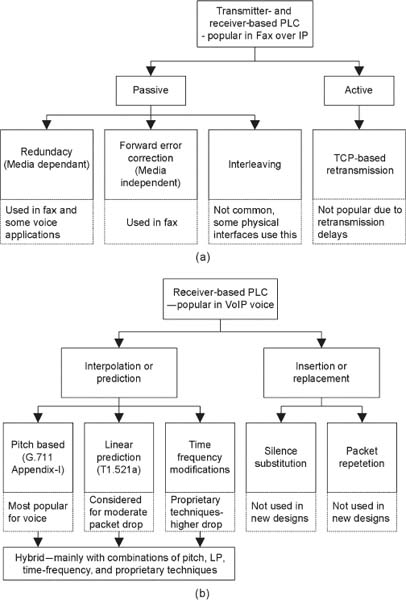5.2 PACKET LOSS CONCEALMENT TECHNIQUES
The broad classification of transmitter-based and waveform-coding receiver-based PLC techniques is given in Fig. 5.1. In the terminology usage, transmitter, sender, and encoder are used for the sending side of packets. The keywords “receiver”, “receiving”, and “decoder” represent the receiving side of the voice packets. The combination of these words also appears in the literature. Transmitter–receiver or transmitter-based techniques are the same. It is implied that transmitter-based techniques use receiver support to decode. Hence, these techniques are simply referred to as transmitter based. The classification is based on major techniques given in [Perkins et al. (1998)]. Several proprietary extensions are available mainly for decoder-based techniques on top of the classification shown in Fig. 5.1(a).

Figure 5.1. PLC techniques major classification. (a) Transmitter–receivers-based techniques. (b) Receiver-only based techniques.
Transmitter-based techniques are classified as active and passive as shown in Fig. 5.1(a). The techniques use mainly redundancy as per RFC2198 [Perkins et al. (1997)] and forward error correction (FEC) as per RFC2733 [Rosenberg and Schulzrinne (1999), Perkins and Hodson (1998)] for erasure concealment. Interleaving and Transmission Control Protocol (TCP)-based retransmissions are not used in voice applications, because ...
Get VoIP Voice and Fax Signal Processing now with the O’Reilly learning platform.
O’Reilly members experience books, live events, courses curated by job role, and more from O’Reilly and nearly 200 top publishers.

